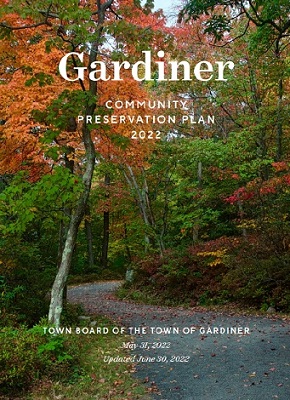Conservation Financing
An important step in implementing a local open space plan is to establish an adequate and stable land protection fund.
Local governments are authorized to spend public funding on the acquisition and maintenance of open space lands under Section 247 of the NYS General Municipal Law. Funding options for municipalities include grants, private donations, fees, taxes, bonding, and appropriation of general town funds, and are described in detail in the Local Open Space Planning Guide (2004) and in Open Lands Acquisition: Local Financing Techniques Under New York State Law (LeJava et al. 2000).
Conservation Finance Ballot Measures
According to the Trust for Public Land's LandVote Database, 90% of local conservation finance measures in New York successfully passed between 1990 and 2022.
| Finance Mechanism | Number of Measures | Measures Passed | % Passed | Conservation Funds Approved |
|---|---|---|---|---|
| Bond | 67 | 58 | 87% | $744,890,000 |
| Property Tax | 6 | 6 | 100% | $17,732,018 |
| Real Estate Transfer Tax | 26 | 25 | 96% | $2,683,150,246 |
| Sales Tax | 3 | 3 | 100% | $767,000,000 |
| Other | 3 | 2 | 67% | $6,675,872 |
| Total | 105 | 94 | 90% | $4,237,982,336 |
Community Preservation Fund
There has been growing interest in Hudson Valley municipalities to use Community Preservation Funds (CPFs) as a dedicated account for local land conservation. The ability to create a CPF requires authorization by the NYS Legislature and has been used for 20 years in eastern Long Island. As of 2020 in the Hudson Valley, authority has been requested and granted to all towns in Putnam, Ulster, and Westchester counties through the Hudson Valley Community Preservation Act (CPA) of 2007 (amended in 2019 to add Ulster); and to the towns of Chatham in Columbia County; Fishkill, Northeast, and Red Hook in Dutchess County; and Warwick in Orange County through Section 64 of the NYS Town Law.
CPFs provide municipalities with the opportunity to generate open space funding without exceeding the real estate property tax cap, by implementing a modest real estate transfer tax. This one-time tax represents a small percentage of the purchase price to be paid by the buyer. The Hudson Valley CPA allows for the fee to apply only to property above the median sale price in the county, not to exceed two percent of the sale price, and towns have the ability to specify the rate and types of transfers included.
Towns with CPF authorization must create a Community Preservation Project (CPP) Plan, which is similar to an open space inventory and plan. The CPP plan must be adopted by the town and the transfer tax must be approved by voters through a public referendum.
Read more about CPFs on Scenic Hudson's website.
Community Preservation Fund in Practice
The towns of Red Hook (together with the villages of Red Hook and Tivoli) and Warwick have both used real estate transfer taxes since 2006, along with purchase of development rights (PDR), to fund the conservation of thousands of acres that were identified as priorities in their plans.
Town of Red Hook Community Preservation Plan
Town of Warwick Community Preservation Project Plan
Since 2020, five additional municipalities in the Hudson Valley have approved local CPFs, including towns of Chatham, Gardiner, Marbletown, and New Paltz, with about 70% of voter support for all referenda. Most recently in 2024, the City of Kingston created a CPF with support from more than 62% of voters.
Town of Chatham Community Preservation Plan
Town of Gardiner Community Preservation Plan
City of Kingston Community Preservation Plan
Town of Marbletown Community Preservation Plan
Town of New Paltz Community Preservation Plan
Helpful Links
Community Preservation Funds (Scenic Hudson)
Open Lands Acquisition: Local Financing Techniques Under New York State Law (LeJava et al. 2000)
Local Open Space Planning Guide (NYS Department of State and DEC 2004)


